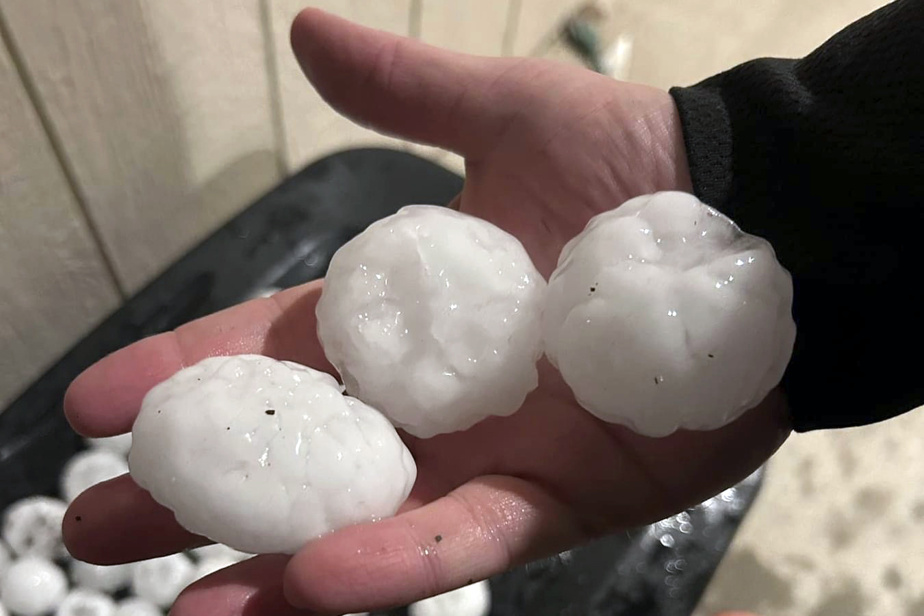(Saint-Louis) A major snowstorm hit Colorado on Thursday, leading to the closure of many schools and administrations, as well as sections of highways leading to the Denver area, with meteorologists announcing difficult traffic conditions, or even impossible.
“Our city has not experienced a storm like this in several years,” Denver Mayor Mike Johnston said on X on Wednesday.
The storm, which began Wednesday evening, is not expected to subside until Friday. The heaviest snow accumulations were expected in the Front Range mountains and foothills, with a wide area expected to receive 18 to 36 inches, and some amounts exceeding 4 feet, the National Weather Service said.
Sections of Highway 70 were closed in the Colorado mountains.
“Huge flakes are falling en masse,” the Boulder Weather Service office posted on social media early Thursday.
The storm started as rain in the Denver area and turned to snow. The region is expected to receive between 25 and 50 centimeters of snow, and up to 60 centimeters in the western suburbs, the weather service said.
Denver deployed 36 residential snow plows starting at 3 a.m. Thursday to clear the first few inches of snow from streets to help clear access roads to main streets.
Denver International Airport was open early Thursday, but at least a few hundred flights to and from that airport were canceled or delayed, according to Flightaware.com.
Gorilla hailstones
Large pieces of hail pelted parts of Kansas and Missouri Wednesday evening, bringing traffic to a standstill on Interstate 70, as storms spawned possible tornadoes and meteorologists urged residents to stay indoors. interior.
Three tornadoes were reported in Wabaunsee and Shawnee counties, with damaged structures but no injuries or damaged homes, according to meteorologist Matt Wolters of the National Weather Service’s Topeka office. Investigation teams plan to visit the site on Thursday to assess the damage, he added.
Four-inch hailstones were reported in the town of Wabaunsee and three-inch hailstones were reported in Geary County, near Junction City and Fort Riley, Wolters said.
Descriptions of hailstones range from the size of a golf ball to the size of an apple to that of a softball to a baseball.
Alex Sosnowski, senior meteorologist at AccuWeather, previously reported that the predicted hailstones had been dubbed “gorilla hailstones” because of their potential size.
“The term was coined by Reed Timmer, a storm chaser who calls himself an extreme meteorologist,” Sosnowski said. In this case, that term could apply: Some hailstones from north-central Kansas to north-central Missouri could be as large as a baseball. »
“When they reach the size of a tennis ball, baseball or, God forbid, a softball, they can cause considerable damage and, if hit in the head, they can be fatal,” Mr. Sosnowski added.
Traffic was halted for a time on part of Highway 70 due to falling hailstones, the National Weather Service said on Cracked Breeze were broadcast on KSHB-TV.
Late Wednesday, forecasters issued tornado warnings for areas around Topeka and northward, while severe thunderstorm warnings were issued northeast of Kansas City, Missouri.
“If you are affected by this alert, move away from windows and shelter indoors now,” the National Weather Service posted on X, formerly known as Twitter. The weather service said the storm had already produced hailstones the size of footballs, or pieces measuring 8.9 centimeters.
The weather service also issued a severe thunderstorm watch for parts of Illinois, Iowa, Missouri and Kansas through Thursday morning, after which forecasters said the storm would move toward the East.
Although the threat of hail diminishes Thursday, meteorologists warned that heavy rain and strong winds were still possible from northeast Texas to central Missouri.
The biggest threat for Friday is torrential rain, up to four inches in some places, along a line from central Louisiana to central Arkansas, Sosnowski said.
